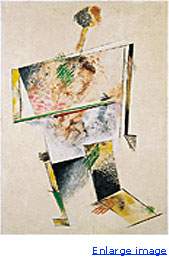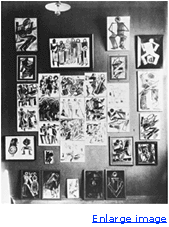








Order the catalogue

The primary demand of the October Revolution–that art be utilitarian and accessible–appealed to Stepanova (and to her husband, Alexander Rodchenko), and she implemented her response in terms of designs for the stage, clothing, and publications. Never a champion of abstraction, Stepanova also brought a new figuration to painting demonstrated by her renderings of individuals and groups such as Five Figures on a White Background, 1920, in which she seemed to be reconstructing the human form according to a code of mechanical engineering. Here are shades of the robot, immortal, cool, and efficient, that will function perfectly in the new proletarian state. Like Exter and Popova, Stepanova proclaimed her commitment to the demand that art adjust to the new industrial order at the historic 5 x 5 = 25 exhibition in Moscow in 1921, immediately thereafter directing her attention to Constructivist stage and clothing design, including her famoussportodezhda, or sports outfit, of 1923.


Top: Figure (Peasant), 1921. Oil on canvas, 125 x 71.5 cm. Private collection.
Bottom: Works by Stepanova in the studio she shared with Alexander Rodchenko, Moscow, 1921.